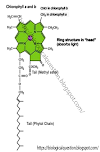Structure of HIV ( Human Immunodeficiency Virus )
Introduction of Structure of HIV ( Human Immunodeficiency Virus )
Human Immunodeficiency Virus (HIV) is the causation agent of acquired immune deficiency syndrome or AIDS. It was identified (in 1984) by research team from Pasture Institute in France and National Institute of Health in USA. The virus was named HIV (in 1986).
Structure of Human Immunodeficiency Virus (HIV)
HIV (Human Immunodeficiency Virus) is a retrovirus that infects and destroys CD4+ T cells, a type of white blood cell that plays a crucial role in the immune system.
The structure of HIV is composed of several parts, including:
1. Envelope: The envelope is a lipid bilayer that surrounds the virus and is derived from the host cell membrane during viral budding. It is studded with glycoproteins, including the viral protein gp120, which plays a crucial role in viral entry and infection. The envelope also contains other proteins and lipids that facilitate viral entry and evasion of the immune system.
2. Capsid: The capsid is a cone-shaped structure made up of the viral protein p24, which encloses the viral RNA and several viral enzymes. The capsid protects the viral RNA and enzymes from degradation and provides a scaffold for viral assembly and maturation.
3. Reverse transcriptase: Reverse transcriptase is a viral enzyme that converts the viral RNA into DNA, which is integrated into the host cell genome. This process is essential for viral replication and persistence in the host.
4. Protease: Protease is a viral enzyme that cleaves viral proteins, allowing for the assembly and maturation of new virus particles. Protease inhibitors are an important class of antiretroviral drugs that block the activity of protease and prevent viral replication.
5. Integrase: Integrase is a viral enzyme that integrates the viral DNA into the host cell genome, allowing for persistent infection. Integrase inhibitors are another class of antiretroviral drugs that target this enzyme and prevent viral integration.
The structure of HIV is highly complex, and each of these parts plays a crucial role in the virus's life cycle and pathogenesis. Understanding the structure and function of HIV is essential in the development of new treatments and prevention strategies for HIV/AIDS.
Diagram the Structure of HIV ( Human Immunodeficiency Virus )
Thank you for Reading the article .


.png)
.png)

.png)
0 Comments